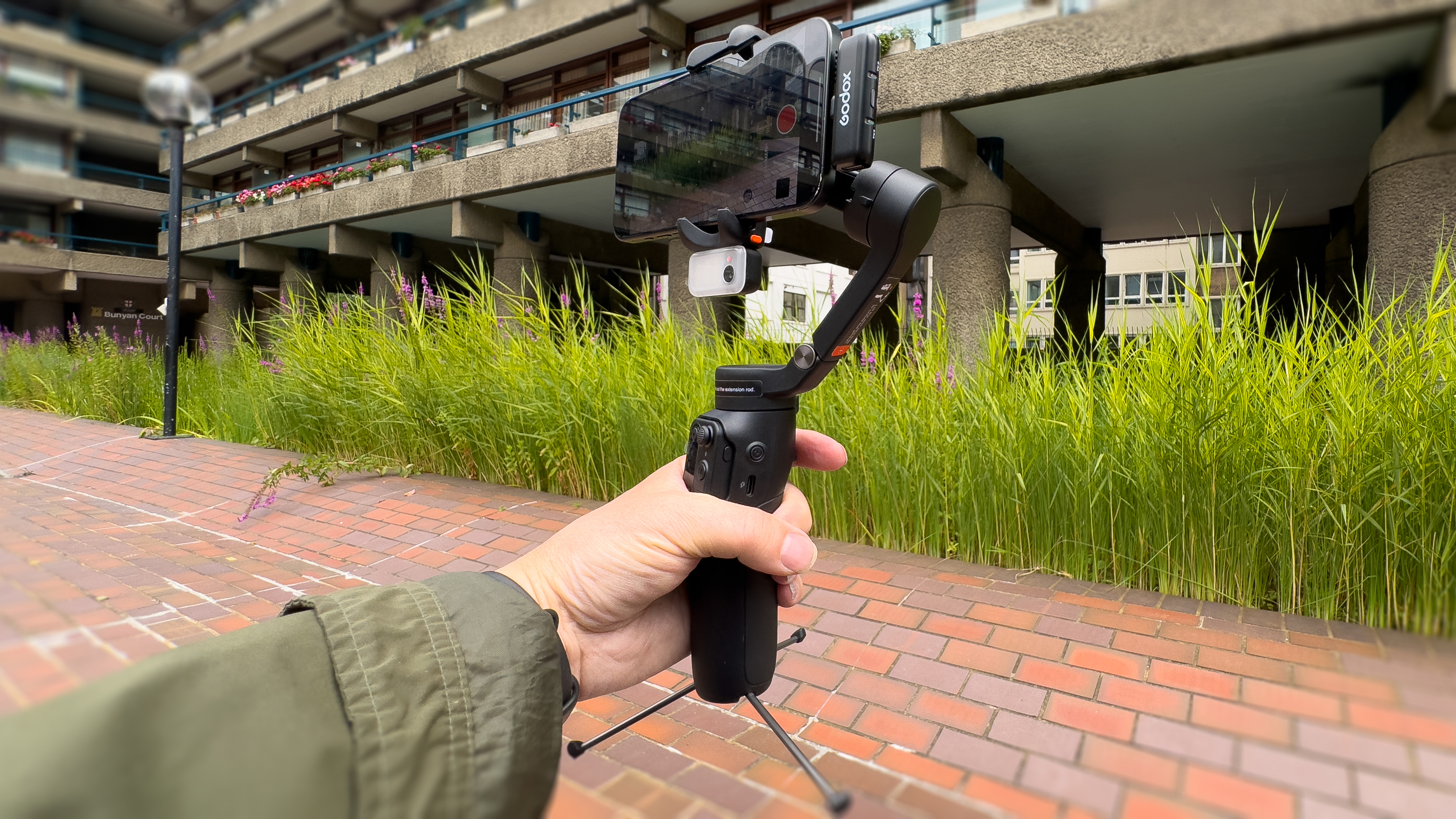
When we think of 3-axis gimbals (or stabilizers), the first brands that probably spring to mind are ZHIYUN and DJI. However another Chinese company - Hohem Tech - has been perfecting its line of smartphone gimbals since 2014 and claims to have produced the first face-tracking gimbal back in 2016. Prior to the iSteady V3, I’ve tested and reviewed two Hohem gimbals - the iSteady MT2 and the iSteady M6.
The Hohem iSteady V3 is the latest version of Hohem’s budget smartphone gimbal range, but it has a few new tricks up its sleeve that should make it attractive to vloggers and videographers who shoot on their smartphones. Indeed its innovative design features could give it the edge over more expensive smartphone gimbals as I’ll explain.
Modern smartphones are great at applying in-camera stabilization to your handheld footage to capture smoother gimbal-like moves, but a gimbal does add an extra level of control. Check out my opinion piece to discover why a gimbal deserves a place in your kit bag even if you have the latest smartphone.
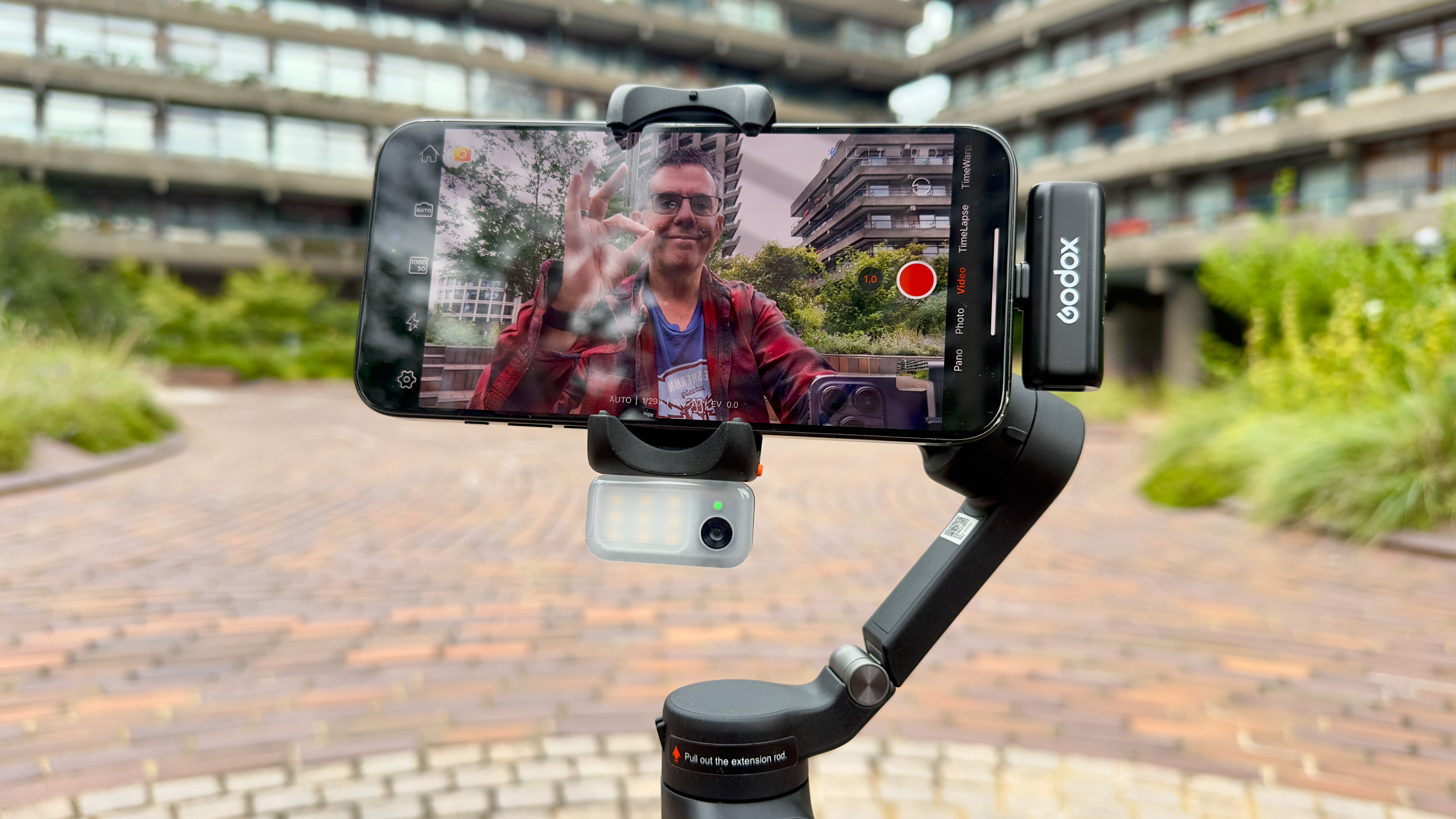
Hohem iSteady V3: Specifications
Hohem iSteady V3: Design & Handling
The first thing you’ll notice about the Hohem iSteady V3 is that it ships in a very small box, so you might not expect there to be a gimbal inside your package! Once you’ve unboxed it you can fit the folded gimbal in your jean pocket (though you’ll need to remove the clip-on AI sensor from the unit first).
This is the smallest gimbal that I’ve tested (it’s my 17th gimbal review to date!), but despite its diminutive stature, it had no trouble maneuvering my iPhone 15 Pro Max to perform smooth tilts, pans, and rolls.
One reason that the gimbal (and its packaging) is so small is that it doesn’t ship with the usual screw-on mini tripod that other smartphone gimbals have. This is down to an innovative design feature where the tripod legs are built into the base of the gimbal ready to be extended when required. I’ve not seen this feature before. At first glance, the three slim metal tripod legs look very spindly, but they were strong enough to keep the gimbal standing steady with an iPhone mounted on it, as you’ll see from our supporting test video in this review’s Performance section.
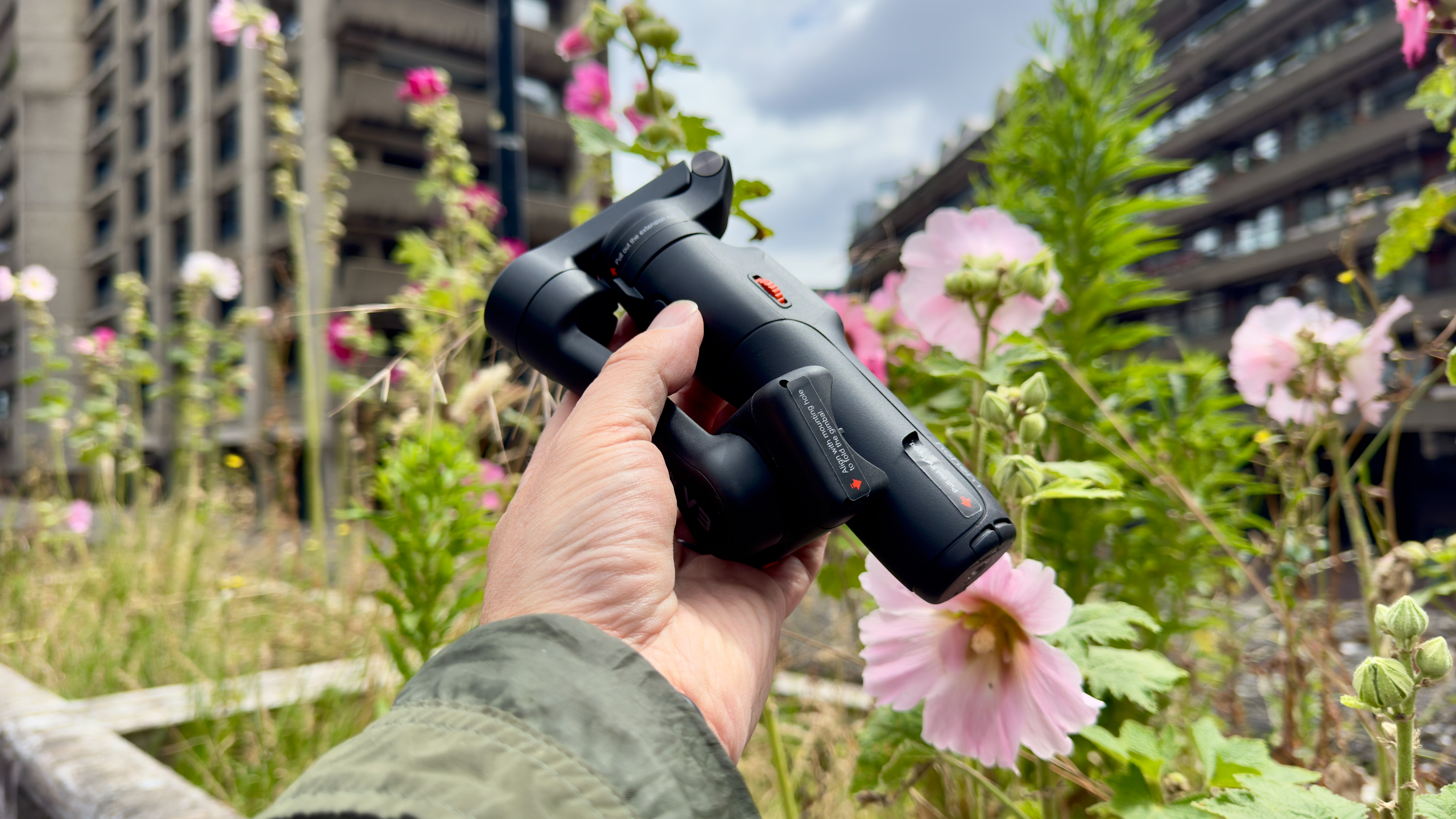
Another innovative design feature is the iSteady’s detachable control panel. You can unclip it from the rear of the gimbal and still control its movements remotely - such as using the panel’s joystick to make the gimbal pan and tilt, or trigger your gimbal-mounted smartphone to start and stop recording with a press of the panel’s record button. The joystick only has one speed when panning and tilting, but this is a budget gimbal after all.
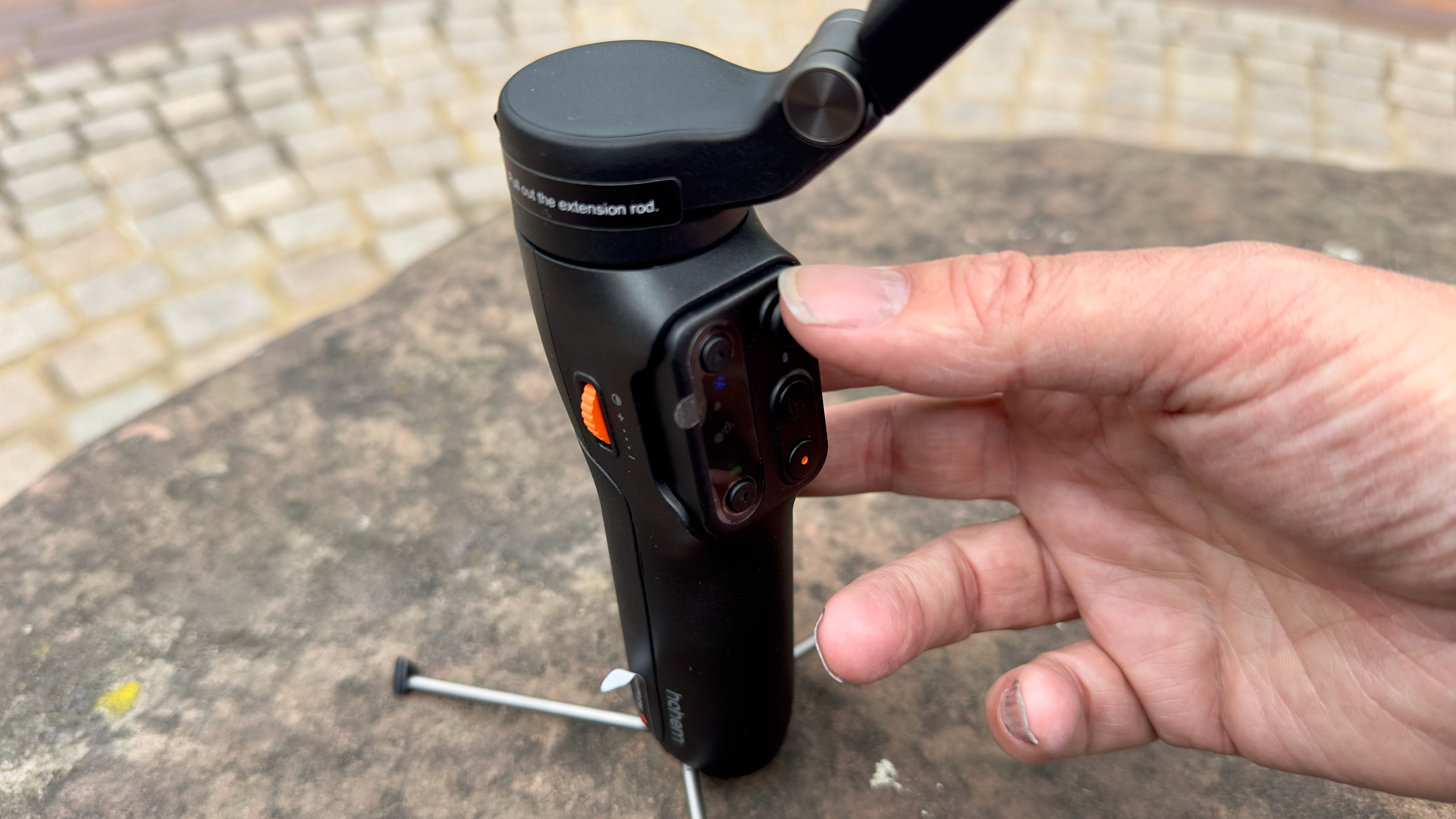
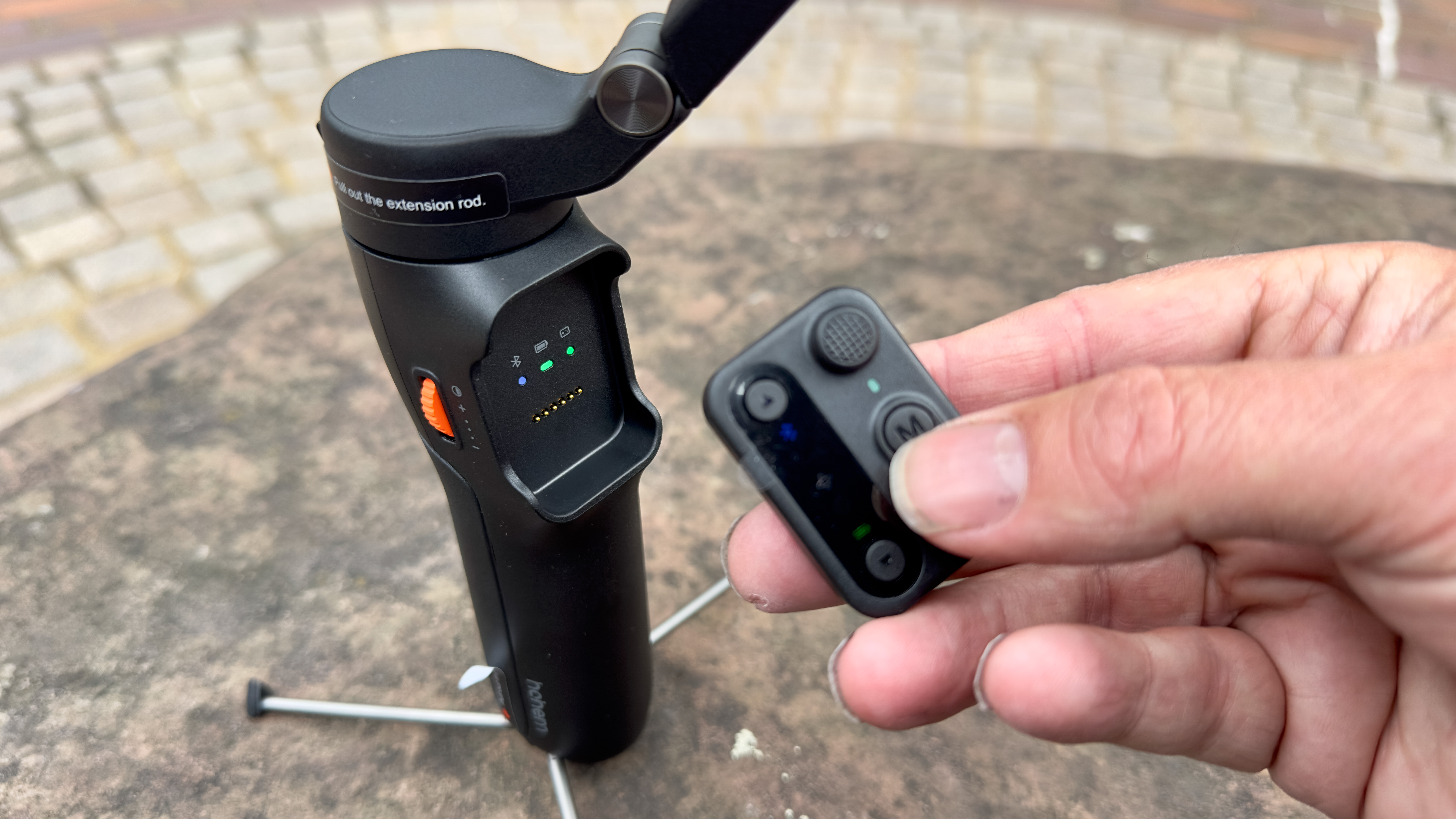
Hohem iSteady V3: Performance
When taking the Hohem iSteady V3 to film in London I was keen to travel light (due to a planned trip to the pub in the evening), so I dug out the smallest kit bag I could find - the McKinnon 8L Sling. I was easily able to fit the iSteady V3 inside the bag along with a mini tripod and an extra iPhone so that I could film the gimbal in action while it filmed me via another iPhone.
I also brought along a wireless mic kit - the Godox WES 2 - so I could record my voice nicely and clearly from a distance when talking to the gimbal-mounted iPhone 15 Pro Max. Usually, when I record using an iPhone mounted in a gimbal I can’t plug a receiver into the iPhone. This is because the iPhone’s USB-C port is usually pressed up against the gimbal’s roll motor. However, due to its compact design, I could plug the WES 2’s receiver into my iPhone 15 Pro Max while it was clamped into the gimbal, enabling me to capture great quality audio during the test shoot.
To test the AI sensor I deployed the iSteady V3’s mini tripod, fired up the Hohem Joy app, and then performed a rather tricky-to-master hand gesture to get the app to start recording footage. The other hand gestures were much easier to implement. An OK gesture caused the AI-sensor to flash green and then the gimbal panned and tilted to follow me as I walked and talked. This movement added energy to what would have been a boringly static ‘talking head’ shot. A palm-to-camera gesture stopped the AI tracker from following me so I could then walk out of the shot.
By default, the gimbal places you in the center of the frame but you can make a framing gesture so that it re-frames to keep you at the left or right of the frame if you desire. I’ve found the re-frame gesture tricky to implement on other gimbals (such as the Zhiyun Smooth 5S AI), but it worked well when applying it to the iSteady V3.
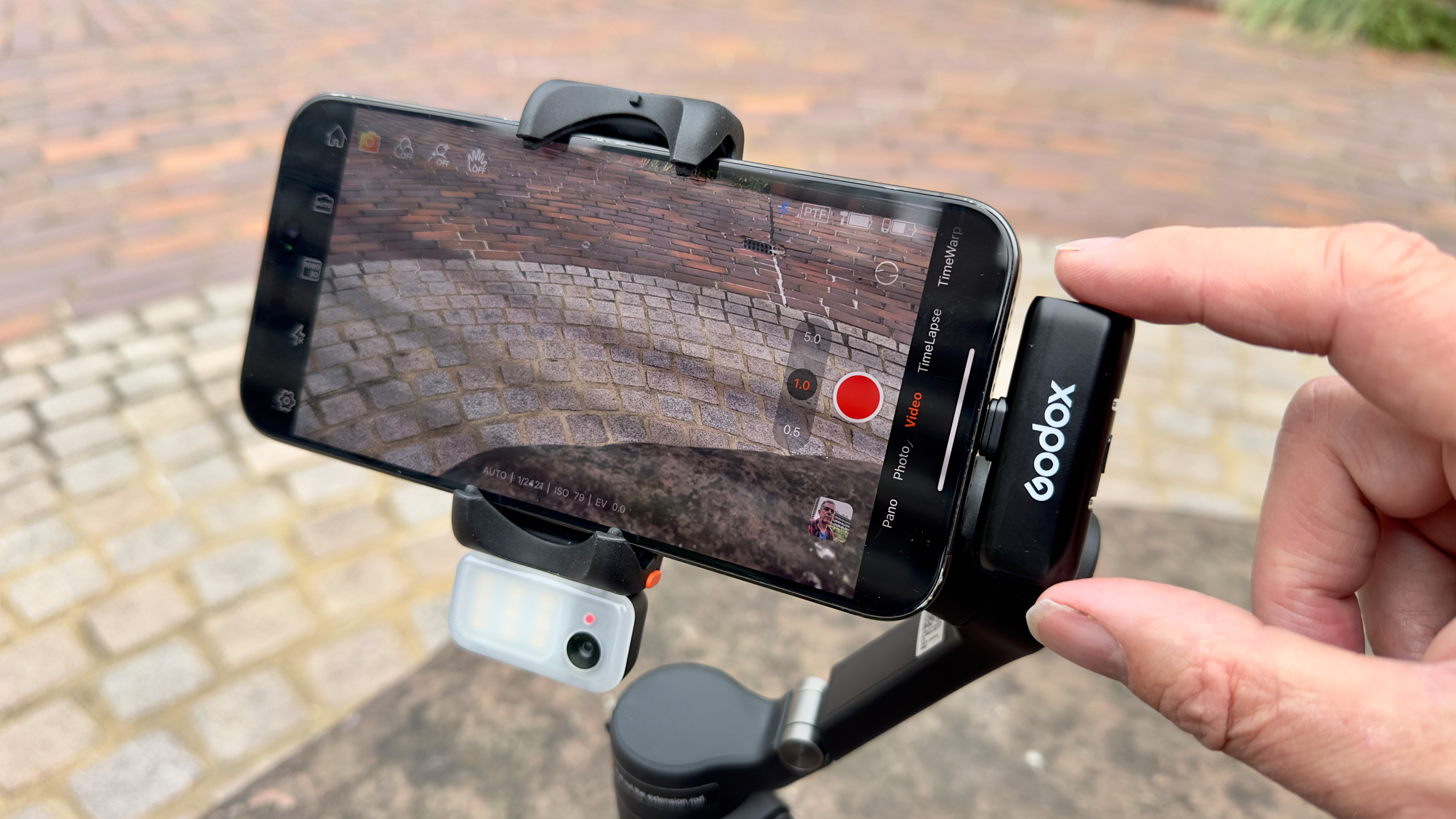
Talking of gesture control - if you do a double thumbs up the gimbal will swap between a horizontal landscape orientation to a vertical portrait orientation. In theory, this could be handy but in practice, I found that when I accidentally did a double thumbs up the gimbal swapped orientation during a take. I tend to wave my hands about as I talk and sometimes the AI-sensor would mistake my hand gesture as a double thumbs up and change orientation (thereby spoiling the take). This happened quite a lot which became annoying (as you’ll see in the supporting video).
As I said, I was using the Hohem Joy app for my test, but most of the gesture controls can be triggered when using your smartphone’s native Camera app. The Hohem Joy app enables you to enjoy an extra level of control, such as pressing the control panel’s zoom buttons to make the app zoom in or out. I was also able to use the Hohem Joy app to capture a wide-angle panoramic shot of myself and my friends when we hit the pub later on.
The AI tracker has a built-in LED fill light. You can press the orange dial on the side of the gimbal to toggle between three color temperature ranges - a warm 2700K, a neutral 5000K, and a cooler 6500K, though at only 110 Lux you’ll need to be shooting a selfie in low light to enjoy the benefit of this feature.
Hohem iSteady V3: Verdict
If you’re a mobile phone videographer then you’ll want to travel light, and the iSteady V3 won’t compete for much space in your kit bag as it's the lightest and most compact of the 17 gimbals that I’ve tested for Digital Camera World. Despite its small size it enables you to make a large smartphone such as the iPhone 15 Pro Max perform cinematic tracks, tilts, and pans as well as follow your every move via the clip-on AI tracker. The extension rod gives you more composition room when shooting a selfie, though due to the gimbal’s limited tilt range between -60 degrees to 60 degrees, it’s not easy to capture very low-angle tracking shots. The detachable remote control panel is very handy, though the built-in LED fill light only makes a difference in very low-light locations.

✅ Buy it...
- You need a budget stabilizer
- You want to travel light
- You need it to track your movement
- You need to control it remotely
🚫 Don't buy it...
- You have a payload over 280g
- Need to shoot very low angle tracking shots







